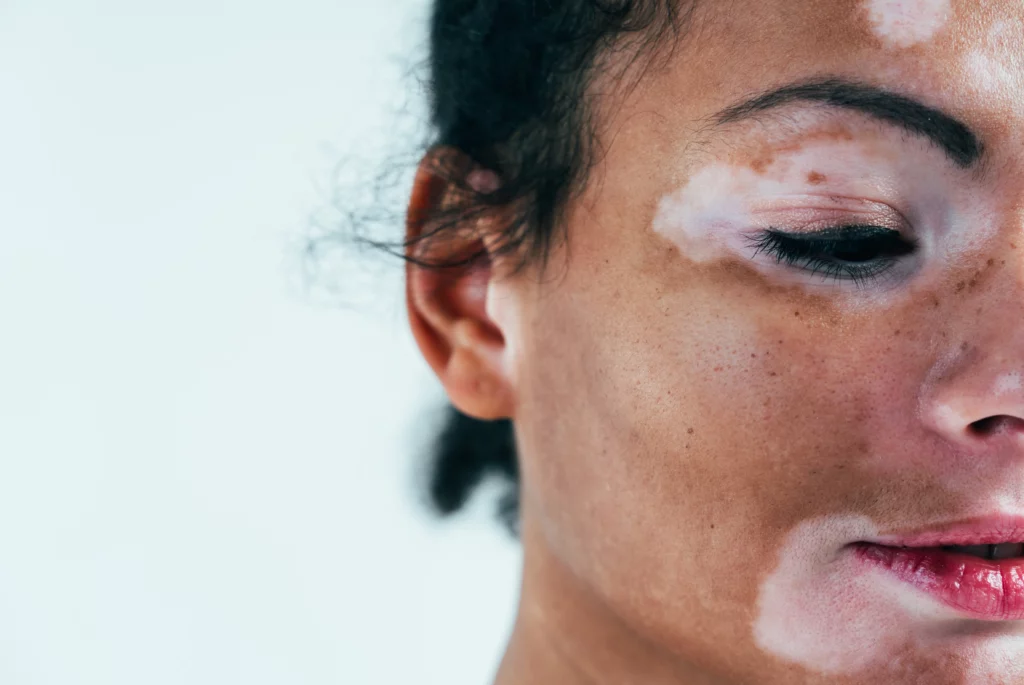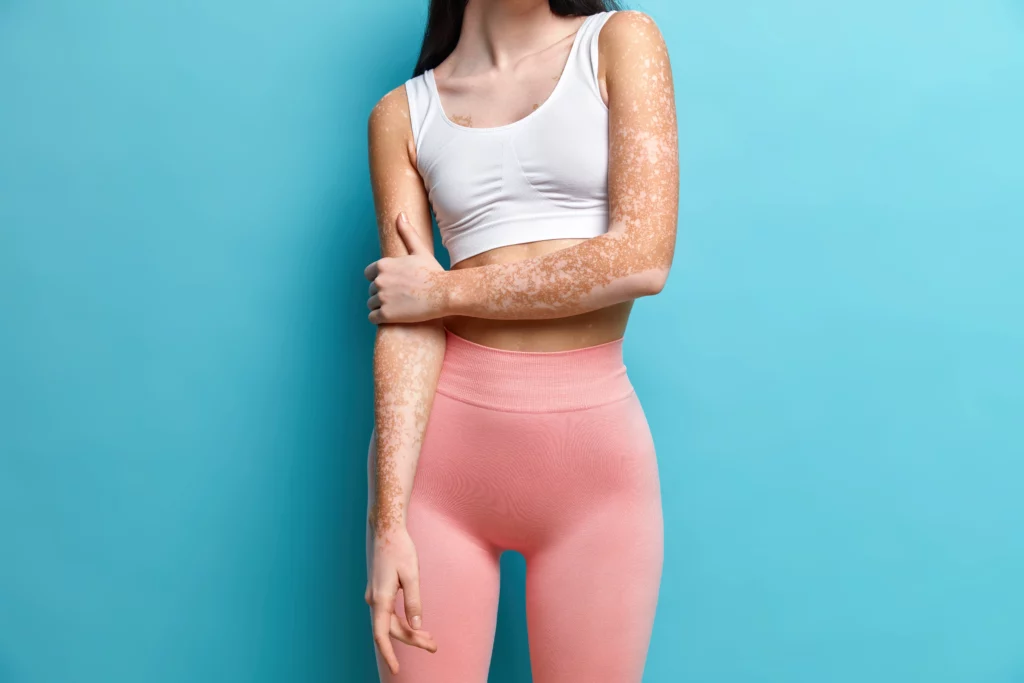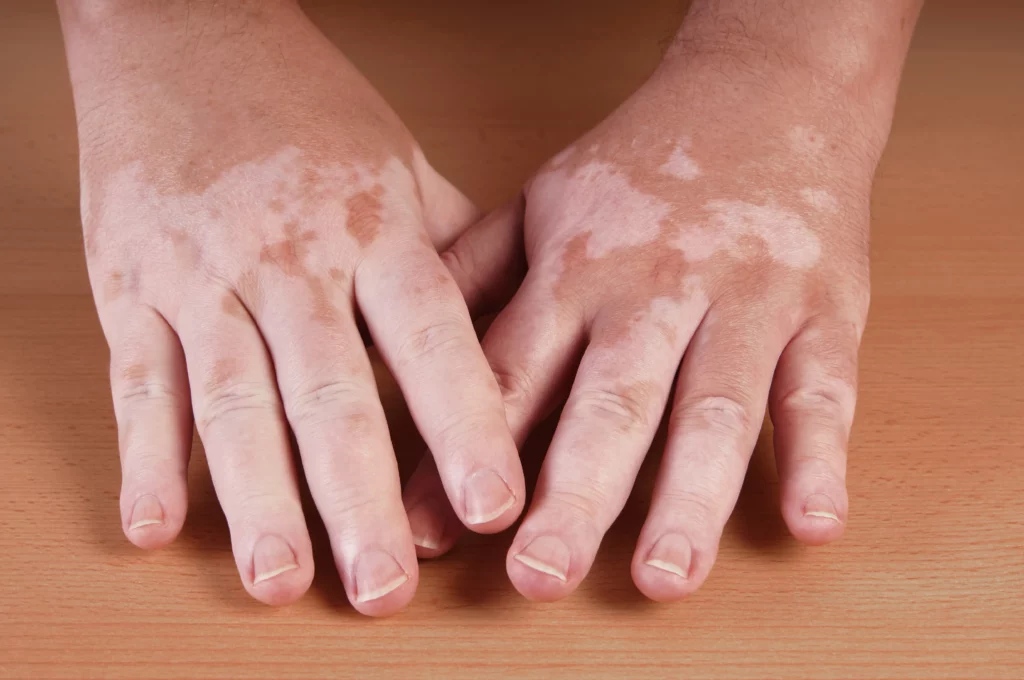Many skin conditions can provoke white spots. Chill back and read through some of the reasons white spots appear on your skin.
White spots don’t tend to be a health risk, but if you want to feel more at ease, appoint a visit to your dermatologist to understand their cause and the best treatment options.

Skin proteins or dead cells may become trapped under the skin’s surface — a result of depigmentation or color loss.
The skin consists of several layers, including the epidermis, dermis, and subcutaneous tissue. The epidermis is the outermost layer of skin containing cells called melanocytes. These cells produce a pigment called melanin, which gives skin its color.
As age rolls, our bodies produce less melanin, causing the skin to lose color. Did you know that exposure to sunlight can also cause the skin to lose color?
The UV rays in sunlight can damage melanocytes, causing them to produce less melanin. Patchy or uneven coloring of the skin may be the result. Finally, certain diseases and medications can also cause the skin to lose color.

Let’s briefly dig into each one to discuss its characteristics and ways of treatment.
Research hasn’t established a cause for it, but vitiligo may be an autoimmune disorder that causes the loss of pigmentation in the skin. It may affect any body part, but a commonplace is on the face, hands, and arms. It may be genetic; witnessing skin discoloration in their 20s.
People with vitiligo can use different treatments to help blend the white patches on their skin, including creams, light therapy, and surgery.
PA is a form of eczema that typically affects children and young adults and is characterized by dry, scaly patches of skin that may be itch.
Treat PA by
These are small, raised bumps on the skin, typically white or yellow. They occur when dead skin cells become trapped in small pockets on the skin’s surface. Milia are most commonly seen on the face but can also occur on other body parts such as the chest or back.
Several factors can contribute to the formation of milia, including sun damage, certain skin conditions, and genetic predisposition. In most cases, milia are harmless and do not require treatment. However, if they are persistent or cause irritation, they can be removed by a dermatologist.
For milia, retinoid creams and ointments are the first line of treatment.
It is characterized by small, round patches of lightened skin that may occur on any part of the body. It is most common in young adults and its causes are still unknown. However, there is an association with certain medications, sun exposure, and some viral infections.
Treatment for guttate hypomelanosis is typically not necessary as the condition is benign and may resolve on its own over time. Nevertheless, if the patches are cosmetically bothersome, several treatments can be effective, including topical bleaching agents, laser therapy, and dermabrasion.
To protect your skin from the sun, wear sunscreen, avoid spending long hours in the sun, and avert artificial tanning beds. You may also use dermabrasion, topical steroid, or retinoid creams.
Sunspots do not suggest the development of cancer. But do protect yourself from the sun for prevention!

There is a fungus that inhabits the surface of the skin. When it gets out of control it may cause dry, scaly, itchy patches. May be either lighter or darker than the surrounding skin.
The patches develop slowly and crowd together.
Symptoms may be noticeable after a suntan. It is widespread, and environments with warm and humid atmospheres may note the effects.
Antifungal shampoos, soaps, and creams are helpful ways to treat fungal infections. Ingredients may include selenium sulfide, pyrithione zinc, or ketoconazole.
In hot environments or during spring and summer, monthly treatment may be necessary.
Doctors may prescribe antifungal pills for a brief time if topical medications are not responsive or if a significant portion of the skin is affected.
Many other conditions can cause white spots on the skin, including other fungal infections such as Candida albicans fungus, psoriasis, and lupus. It is important to consult a dermatologist with any treatment to determine the best course of action.
Warmer climates can also influence a reaction on your skin.
Nourish yourself from harm using 2+Topicals® Nutritional Lotion. Its diverse mix of crucial nutrients for the skin will hydrate and protect your skin.
Learn more about us! Purchase yours today and start feeling the soothing effects!